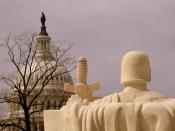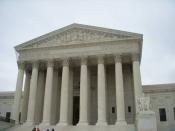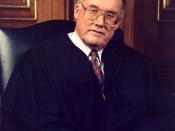Separation of Church and State
Religion and education, in their connection, are both intimate and of long duration (Gaustad 83). Throughout the years, dating back as early as 1869, there have been several court cases and civil arguments concerning the separation of church and state. Arguments concerning prayer before class, religious studies taught in class, and even done to the theory of evolution have been many of the main concerns throughout the years.
Edwin S. Gaustad's book Church and State in America, he presents several court cases in which they argue or resolve issues concerning the separation of church and state and religions role in the classroom. In the U.S. public schools, where the vast majority of the nation's young people are educated, control of religion in class tends to be more local rather than federal (Gaustad 83). Also, in those schools the constitutionally correct way of dealing with religion tends to be a major problem for all concerned: the pupils, the parents, the religious leaders, the school teachers and administrators, and the political leadership at all governmental levels.
In the past when an imperial state controlled the church, it also controlled the educational system. Today in most European nations the relations between the church and educational systems are closely related, however in the United States the case is just the opposite (83).
As early as 1869, parents were suing the public schools of Cincinnati, Ohio, in an effort to purge them of their Protestant religious exercises. A large part of the difficulty could be traced to that persistent Protestant flavor, in one section of the country or another, in the locally controlled public school system (Gaustad 84). Judge Alphonso Taft found these exercises clearly "Protestant worship" and it was offensive to the Catholics and Jews. After a short while,



Taylor blake
i thought that it was to much like blake's essay on 'the case for prayer in the public schools' and was just paraphrasing what he had said there. although content wise it was a good essay, he really did not say anything new that he had not said in his previouse essay.
1 out of 1 people found this comment useful.